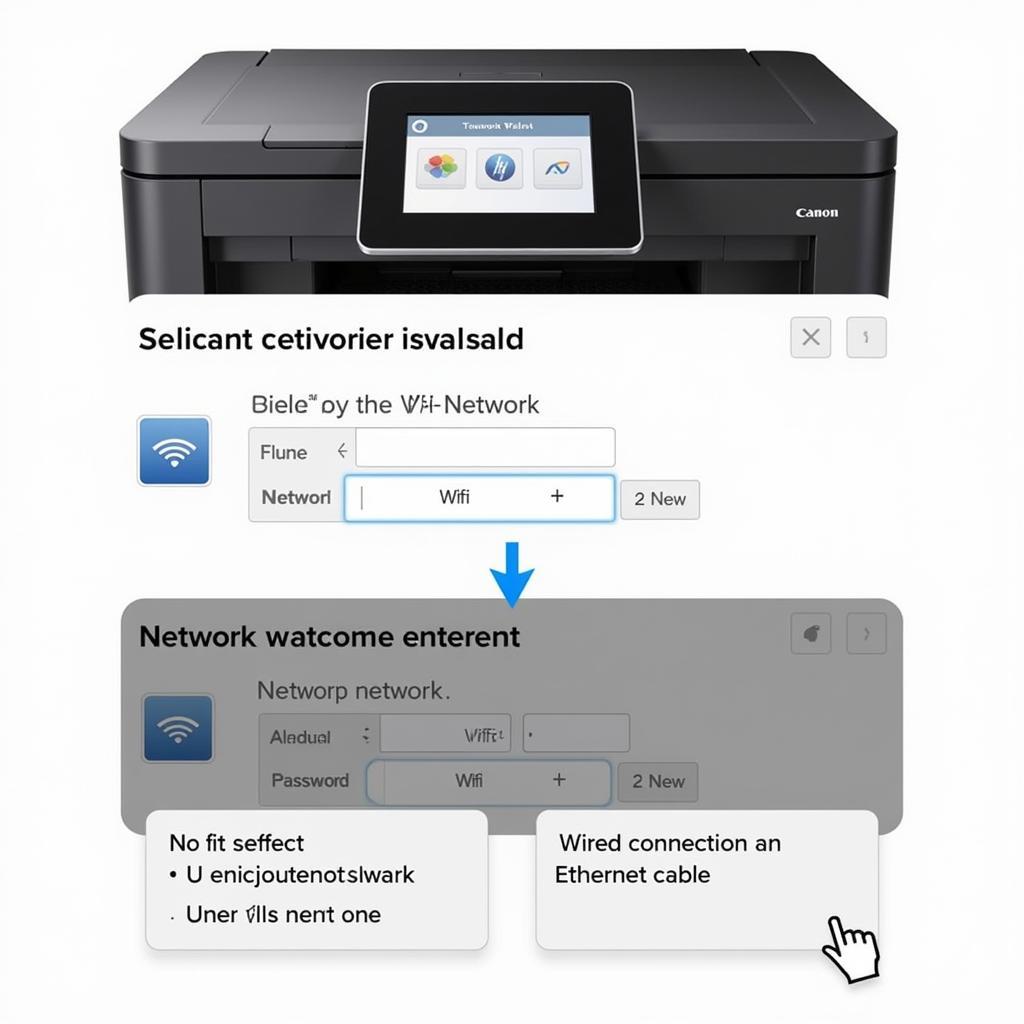The Electronic Stability Program (ESP) is a crucial safety feature in your 2005 Mercedes E320. When encountering an “ESP malfunction” message on your dashboard, it’s essential to address it promptly. This comprehensive guide delves into the common causes of ESP problems in the 2005 E320, how to diagnose them, and the steps to get your ESP back in top shape.
Understanding Your E320’s ESP System
The ESP system in your 2005 E320 is designed to maintain vehicle stability during cornering and slippery conditions. It works by selectively applying brakes to individual wheels and managing engine torque to prevent skidding and loss of control. When the ESP system detects a problem, it illuminates the ESP warning light on your dashboard, indicating a potential issue.
Common Causes of ESP Problems in the 2005 E320
Several factors can trigger ESP problems in your Mercedes E320. Here are some of the most prevalent culprits:
- Faulty Steering Angle Sensor: This sensor relays information about your steering wheel position to the ESP control unit. A malfunctioning sensor can disrupt this communication, leading to ESP errors.
- Wheel Speed Sensor Issues: Each wheel has a speed sensor that provides data to the ESP system. A faulty sensor or damaged wiring can cause inaccurate readings, triggering the ESP light.
- Brake Light Switch Malfunction: The ESP system relies on the brake light switch to determine when you are braking. A faulty switch can disrupt this signal, leading to ESP problems.
- Lateral Acceleration Sensor Problems: This sensor measures the lateral (side-to-side) movement of your vehicle. A malfunctioning sensor can misinterpret vehicle dynamics and activate the ESP warning.
- Issues with the ESP Control Unit: In some cases, the ESP control unit itself can malfunction. This scenario often requires specialized diagnostic tools and potential replacement.
Diagnosing the ESP Problem
Accurately diagnosing the root cause of the ESP problem is crucial before attempting any repairs. Here’s how you can pinpoint the issue:
- Visual Inspection: Start by visually inspecting the brake light switch and wiring harnesses connected to the ESP system for any visible damage or loose connections.
- OBD-II Scanner: Connect an OBD-II scanner to your vehicle’s diagnostic port. This tool can retrieve trouble codes stored in the car’s computer, providing valuable insights into the ESP problem.
- Professional Diagnostics: If you’re uncomfortable with DIY diagnostics or the problem persists, consider taking your E320 to a qualified Mercedes-Benz technician or a reputable auto repair shop specializing in European vehicles. They have the expertise and specialized diagnostic equipment to accurately identify and address the issue.
 OBD2 Scanner
OBD2 Scanner
Fixing the ESP Problem
The repair procedure will depend on the specific cause of the ESP problem. Here are some general solutions:
- Sensor Replacement: If a faulty steering angle sensor, wheel speed sensor, lateral acceleration sensor, or brake light switch is identified, replacement is typically the most effective solution.
- Wiring Repair: Damaged or loose wiring harnesses connected to the ESP system should be repaired or replaced to ensure proper signal transmission.
- Control Unit Reprogramming or Replacement: In some cases, the ESP control unit might require reprogramming or replacement. This procedure typically necessitates professional assistance.
 Mechanic replacing car sensor
Mechanic replacing car sensor
Frequently Asked Questions
Q: Can I still drive my car with the ESP light on?
While your car might still be drivable, it’s strongly advised against ignoring the ESP warning light. Driving with a potentially compromised ESP system can increase the risk of accidents, especially in challenging driving conditions.
Q: What is the difference between ESP and ABS?
ABS, or Anti-lock Braking System, prevents wheel lockup during braking. ESP builds upon ABS functionality by also detecting and correcting potential loss of vehicle control during cornering or slippery conditions.
Q: Are there any recommended OBD-II scanners for Mercedes-Benz vehicles?
Yes, you can find reliable and affordable OBD2 scanners tailored for Mercedes-Benz vehicles on CARDIAGTECH. These scanners offer comprehensive diagnostic capabilities and user-friendly interfaces. Check out the selection here.
Q: Can a faulty battery cause ESP problems?
While not a direct cause, a weak or failing battery can disrupt the electrical system’s stability, potentially affecting sensor readings and triggering warning lights, including the ESP light.
Q: How often should the ESP system be inspected?
It’s a good practice to have your car’s electronic systems, including the ESP, inspected by a qualified technician at least once a year or as part of your regular maintenance schedule.
Conclusion
Addressing ESP problems in your 2005 Mercedes E320 is vital for ensuring your safety and maintaining optimal vehicle performance. By understanding the common causes, utilizing proper diagnostic techniques, and taking appropriate repair measures, you can keep your E320’s ESP system in excellent working order. Remember, proactive maintenance and timely repairs contribute to safer and more enjoyable driving experiences.


